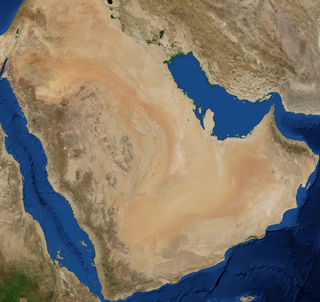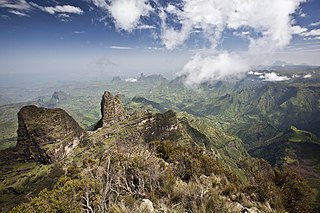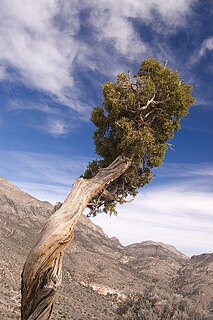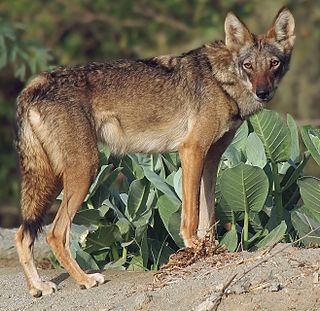
Oman is a country situated in Southwest Asia, bordering the Arabian Sea, Gulf of Oman, and Persian Gulf, between Yemen and the United Arab Emirates (UAE).

The Kingdom of Saudi Arabia is a country situated in Southwest Asia, the largest country of Arabia, by the Arabian Peninsula, bordering the Persian Gulf and the Red Sea, north of Yemen. Its extensive coastlines on the Persian Gulf and Red Sea provide great leverage on shipping through the Persian Gulf and the Suez Canal. The kingdom occupies 80% of the Arabian Peninsula. Most of the country's boundaries with the United Arab Emirates (UAE), Oman, and the Republic of Yemen are undefined, so the exact size of the country remains unknown. The Saudi government estimate is at 2,217,949 square kilometres, while other reputable estimates vary between 2,149,690 and 2,240,000 sq. kilometres. Less than 1% of the total area is suitable for cultivation, and in the early 1960s, population distribution varied greatly among the towns of the eastern and western coastal areas, the densely populated interior oases, and the vast, almost empty deserts.

Yemen is located in Southwest Asia, at the southern tip of the Arabian Peninsula, between Oman and Saudi Arabia. It is situated at the entrance to the Bab-el-Mandeb Strait, which links the Red Sea to the Indian Ocean and is one of the most active and strategic shipping lanes in the world. Yemen has an area of 527,970 square kilometres (203,850 sq mi), including the islands of Perim at the southern end of the Red Sea and Socotra at the entrance to the Gulf of Aden. Yemen's land boundaries total 1,746 kilometres (1,085 mi). Yemen borders Saudi Arabia to the north and Oman to the northeast.

The Arabian Desert is a vast desert wilderness in Western Asia. It stretches from Yemen to the Persian Gulf and Oman to Jordan and Iraq. It occupies most of the Arabian Peninsula, with an area of 2,330,000 square kilometers (900,000 sq mi). It is the fifth largest desert in the world, and the largest in Asia. At its center is Ar-Rub'al-Khali, one of the largest continuous bodies of sand in the world.

The Ethiopian Highlands is a rugged mass of mountains in Ethiopia, situated in the Horn region in northeast Africa. It forms the largest continuous area of its elevation in the continent, with little of its surface falling below 1,500 m (4,900 ft), while the summits reach heights of up to 4,550 m (14,930 ft). It is sometimes called the Roof of Africa due to its height and large area. Most of the Ethiopian Highlands are part of central and northern Ethiopia, and its northernmost portion reaches into Eritrea.

Wadi Mujib, which is also "almost certainly" known as the biblical Arnon Stream, is a river canyon in Jordan which enters the Dead Sea c 420 metres (1,380 ft) below sea level.
The Yemen warbler or Yemen parisoma is a species of Old World warbler in the family Sylviidae. It is found in Saudi Arabia and Yemen where its natural habitat is subtropical or tropical dry forests. It is threatened by habitat loss and the International Union for Conservation of Nature has assessed its conservation status as being "Near Threatened".

The Sarawat Mountains, also known as the Sarat, is a mountain range in the western part of the Arabian Peninsula. In a broad sense, it runs parallel to the eastern coast of the Red Sea, and thus encompasses the Asir and Hijaz Mountains, which can be seen as including the Midian Mountains. In a narrow sense, the Sarawat start in Asir in southern Saudi Arabia, and extend to the Gulf of Aden in the south, running along the entire western coast of Yemen, in what used to be North Yemen, and extend eastwards into part of what used to be South Yemen, thus running parallel to the Gulf of Aden.

The Hijaz Mountains, or the "Hejaz Range", is a mountain range located in the Hejazi region of western Saudi Arabia. The range runs north and south along the eastern coast of the Red Sea, and can thus be treated as including the Midian Mountains, and being part of the Sarawat Mountains, broadly speaking.

The Arabian Peninsula coastal fog desert on the southern coasts of the Arabian Peninsula is an ecoregion which experiences thick fogs where visibility may be reduced to 33 feet (10 m). It is classed as an Afrotropic fog desert

The Asir Mountains is a mountainous region in southwestern Saudi Arabia running parallel to the Red Sea. It comprises areas in the 'Asir Region of Saudi Arabia, however it also generally includes areas near the Yemeni border. The mountains cover approximately 100,000 square kilometres (40,000 sq mi) and consists of mountains, plains, and valleys of the Arabian highlands. Sensu lato, they are part of the Sarawat Mountains, defining the latter as the mountain range which runs parallel to the Tihamah throughout the western portion of the Arabian Peninsula, particularly the western parts of Saudi Arabia and Yemen.

Al-Hajar Mountains in northeastern Oman and also the eastern United Arab Emirates are the highest mountain range in the eastern Arabian peninsula. Also known as "Oman Mountains", they separate the low coastal plain of Oman from the high desert plateau, and lie 50–100 km (31–62 mi) inland from the Gulf of Oman.
The wildlife of Yemen is substantial and varied. Yemen is a large country in the southern half of the Arabian Peninsula with several geographic regions, each with a diversity of plants and animals adapted to their own particular habitats. As well as high mountains and deserts, there is a coastal plain and long coastline. The country has links with Europe and Asia, and the continent of Africa is close at hand. The flora and fauna have influences from all these regions and the country also serves as a staging post for migratory birds.

The wildlife of Saudi Arabia is substantial and varied. Saudi Arabia is a very large country forming the bulk of the Arabian Peninsula. It has several geographic regions, each with a diversity of plants and animals adapted to their own particular habitats. As well as high mountains and deserts, there is a coastal plain and long coastline on the Gulf of Aqaba and the Red Sea to the west and a rather shorter coastline on the Persian Gulf to the east.
Jabal Aja Protected Area is a protected area in northern Saudi Arabia. It consists of a red granite mountain range projecting from a flatter area and is of importance for both plant and animal life. It lies at 27°30'N and 41°30'E close to the town of Ha'il and has a total area of around 200,000 hectares. Jabal Aja has been designated an Important Plant Area and an Important Bird and Biodiversity Area.

The wildlife of the United Arab Emirates is the flora and fauna of this country on the eastern side of the Arabian Peninsula and the southern end of the Persian Gulf. The country offers a variety of habitats for wildlife including the coast, offshore islands, mangrove areas, mudflats, salt pans, sand and gravel plains, sand dunes, mountain slopes, wadis and rocky summits. Because the terrain is so varied, it supports a greater number of species of plants and animals than might have been expected in this relatively small country.

The wildlife of Oman is the flora and fauna of this country in the southeastern corner of the Arabian Peninsula, with coasts on the Gulf of Oman and the Arabian Sea. The climate is hot and dry, apart from the southeastern coast, and the country offers a variety of habitats for wildlife including mountains, valleys, deserts, coastal plains and sea coasts.


























